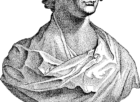Persuasion by Jane Austen: A Timeless Masterpiece for Art Enthusiasts and Collectors

Introduction:
In the realm of literary classics, few works have stood the test of time as gracefully as “Persuasion” by Jane Austen. Published posthumously in 1818, this novel offers a captivating exploration of love, societal expectations, and the complexities of human relationships. For art enthusiasts and collectors, delving into the world of Austen’s “Persuasion” provides insight into an author’s keen observations of the human condition, while also offering glimpses into the historical context in which the story unfolds.
A Historical Journey through “Persuasion”:

Initially titled “The Elliots,” “Persuasion” tells the tale of Anne Elliot, a woman who faces the consequences of an ill-advised decision she made in her youth. As we journey back to the early 19th century, it becomes evident that Jane Austen penned this novel during a period of great social and political change. England, transitioning from the Regency era to the Georgian era, experienced a shift in values, demonstrating the need for individuals like Anne Elliot to navigate the complexities of class, family, and societal expectations.
The Evolution of “Persuasion” Over Time:
Since its publication, “Persuasion” has garnered both critical acclaim and a dedicated following of admirers. Initially overshadowed by Austen’s more famous works such as “Pride and Prejudice” and “Sense and Sensibility,” “Persuasion” gained recognition in the 20th century as readers unearthed its timeless themes and poignant character portrayals. The novel, marked by Austen’s wit and astute observations of human nature, has inspired countless adaptations, from stage plays to film and television adaptations, capturing the imagination of new generations.
Understanding the Themes of “Persuasion”:
The heart of “Persuasion” lies in its exploration of persuasive influence, both external and internal, and its impact on personal choices and relationships. Austen astutely portrays the consequences of yielding to persuasion versus the rewards of self-awareness and authenticity. Themes of second chances, regret, and the complexity of love permeate the narrative, painting a nuanced portrait of a woman’s journey towards self-discovery and happiness.
The Significance of “Persuasion” for Art Enthusiasts and Collectors:
As art enthusiasts and collectors delve into the world of “Persuasion,” they uncover a vast array of artistic references and discussions. Jane Austen, a keen observer of society, incorporates art as a medium to reflect the emotions and aspirations of her characters. From the depiction of Sir Walter Elliot’s obsession with his ancestral portraits to the portrayal of Anne Elliot’s artistic sensibilities, art acts as a symbolic language that enhances character development and deepens our understanding of their struggles, desires, and aspirations.
The Role of “Persuasion” in Literature and Beyond:
“Pride and Prejudice” may have solidified Austen’s literary reputation, but “Persuasion” showcases her exquisite storytelling skills and profound insights into the human psyche. It stands as a testament to her enduring legacy and continues to captivate readers and scholars worldwide. Whether approaching “Persuasion” as a work of classic literature or exploring its artistic dimensions, the novel offers a compelling lens through which to comprehend the complexities of societal dynamics, individual agency, and the power of persuasion.
Conclusion:
“Persuasion” by Jane Austen stands as a masterpiece that goes beyond the confines of its time. As art enthusiasts and collectors explore the rich tapestry of this novel, they encounter a wide array of themes and ideas that resonate across centuries. From its historical context to its exploration of persuasive influence and the role of art, “Persuasion” holds a mirror to our own perceptions and choices, reminding us that the pursuit of authenticity and self-discovery is a universal journey. Through Anne Elliot’s tale, Jane Austen invites us on a thought-provoking and emotionally resonant adventure that continues to enthrall and inspire.











